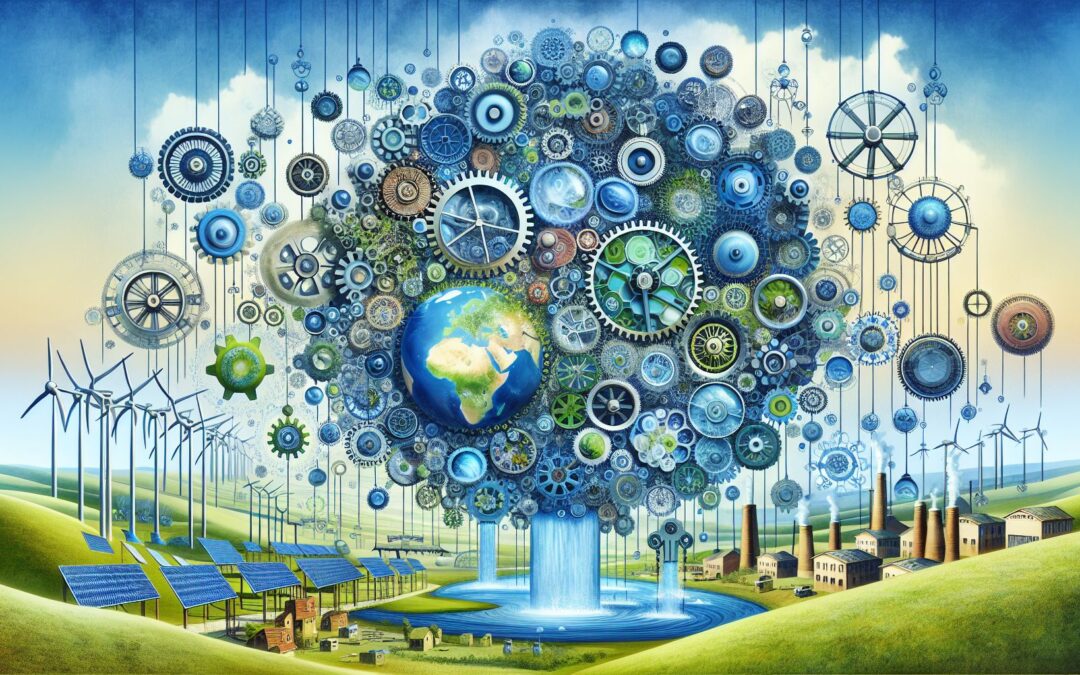As the world grapples with the ever-growing needs of urbanization and technological advancement, a paramount question arises: How can we sustain our developmental demands while preserving our natural resources? The conversation about the sustainable future usually involves separate mentions of water and energy. However, their intrinsic, inseparable relationship—termed the water-energy nexus—demands equal, if not more, attention and deliberation.
Understanding the Water-Energy Nexus
The water-energy nexus refers to the close interdependence between water and energy, where water is required for energy production, and energy is utilized in providing water services. It is a symbiotic relationship that forms the backbone of several essential services, including power generation, agriculture, and sewage treatment.
Activities such as extracting, treating, and transporting water require energy. On the other hand, processes like pumping, heat, and conditioning are integral to energy production. It is estimated by the U.S. Department of Energy that water and energy systems account for more than half of the domestic water used in the United States[^1^]. Similarly, water service providers in California are the largest energy user at a local level, taking up about 19% of the state’s energy and contributing to approximately 1.4% of statewide carbon emissions[^2^].
[^1^]: U.S. Department of Energy, The Water-Energy Nexus: Challenges and Opportunities
[^2^]: Natural Resources Defense Council, Water-Energy Nexus in California
Challenges of the Nexus
The challenges that the water-energy nexus presents are complex and multi-faceted. The most pressing is undoubtedly the burgeoning demand due to population growth, urbanization, and industrialization. With the rising populations and economic development, both the water and energy demands are expected to rise significantly in the coming years, further stressing the nexus.
Climate change further complicates matters. It not only affects water resources in terms of quantity and quality but also influences energy production and consumption. For instance, reduced rainfall can lead to lower hydropower output, while higher temperatures can increase energy demand for cooling. Furthermore, with many power plants relying on water for cooling, any scarcity may lead to disruptions in energy supply.
Towards a Sustainable Balance
Achieving a sustainable balance in the water-energy nexus requires integrated management and innovative approaches that consider both water and energy systems holistically. Making it a part of strategic policy-making can ensure efficiency and resilience in these interconnected resources.
Technology has a crucial role to play in this aspect. Advanced treatment technologies can enhance water recovery, reduce energy use, and generate energy from waste. For example, novel energy-efficient desalination techniques can deliver potable water in water-scarce areas or during periods of drought. Similarly, energy recovery technologies such as anaerobic digestion and hydroelectric turbine systems can make wastewater treatment plants into energy producers.
Changing public behavior is equally important in rebalancing the nexus. Educating consumers about the water-energy linkage can encourage conservation and efficiency. Improving data availability and transparency can also help identify wasteful practices and areas of potential improvement.
The Road Ahead
The water-energy nexus presents a complex web of challenges that require a coordinated response from policymakers, researchers, stakeholders, and consumers. Navigating this nexus successfully can lead to substantial environmental, social, and economic benefits. It presents opportunities to enhance resource efficiency, mitigate climate change, and drive technological innovation. Most importantly, it holds the promise of secure, reliable, and affordable energy and water for generations to come.
The goal of balancing sustainability and development is a shared responsibility. As we move forward, let us collectively commit to fostering more mindful consumption and smarter production to support this pivotal balance within the water-energy nexus. Together, we can ensure a sustainable future for all.

